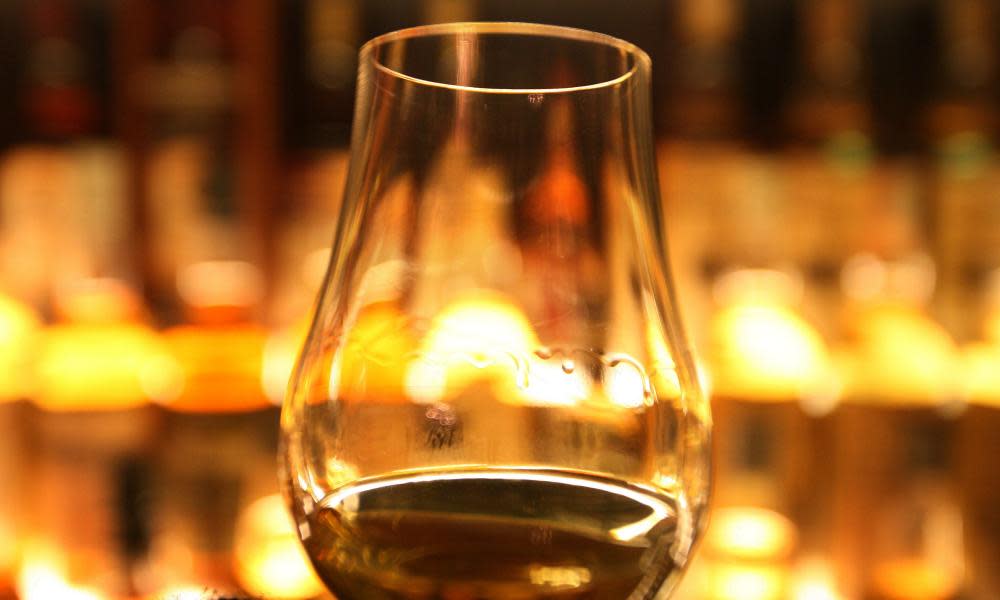Scientists reveal why whisky tastes better with water

Neat, on the rocks, or with a dash of mineral water. Whisky enthusiasts have long disagreed about how the amber nectar is best enjoyed, but now a scientific paper has backed the idea that diluting whisky can enhance its flavour.
The work suggests that adding water boosts the concentration of flavour compounds at the surface of the drink, helping to unleash the rich mix of aromas.
Björn Karlsson, a chemist at Linnæus University in Sweden and the paper’s co-author, said: “What came out from our study is that adding water to whisky should make it taste better.”
Karlsson and his co-author, Ran Friedman, had come across the idea that adding water to whisky improved the taste and aroma. “Neither of us are big whisky drinkers,” he said. “But we were interested in the chemistry.”
To investigate why adding water could intensify flavour, rather than the reverse, they developed a simple computational model to look at the interactions of water, ethanol – whisky’s two basic ingredients – and a flavour compound called guaiacol that comes from the charred oak casks used to mature Scotch and has a characteristically sweet, smoky flavour.
Despite including just three chemicals, Karlsson said the interplay is fairly complex. One end of the ethanol molecule is attracted to water, while the other end is repelled. This means that at very low concentrations, ethanol accumulates at the surface, where molecules can roughly align themselves in their preferred direction, with the water-repelling side facing upwards towards the air.
Above a certain concentration, the ethanol cannot all fit at the surface and so it escapes down into the bulk of the liquid, but still clusters into pockets. The guaiacol is more strongly attracted to the ethanol than the water meaning that the alcohol concentration determines how much of it is found near the top of the glass.
In the distillery, cask strength whisky, which can be more than 60% alcohol by volume, is typically diluted to 40-45%.
The new paper, published in the journal Scientific Reports, showed that diluting a whisky from 45% to 27% boosted the density of guaiacol at the surface by more than one third. Other flavour compounds are known to have similar behaviours, Karlsson said, meaning that the findings could explain the benefits of adding water.
Karlsson said that bottling a whisky at a higher concentration than is optimal in terms of taste also made sense because this would help prevent flavour compounds escaping into the bottle’s headspace, where they would waft away on opening.
Matthew Pauley, an assistant professor at the International Centre for Brewing and Distilling at Heriot-Watt University in Edinburgh, said he would like to see the findings put to a taste test to see whether the model could predict the exact sweet spot for dilution. Pauley said that to “take apart” a whisky’s taste, he favoured the industry standard of diluting to 20%. “It’s all very well doing it on a computational model,” he said. “I’m not pooh-poohing the results, but I’d like to do the test.”
Pauley said that scientific research on whiskies was welcome as it helped strip away “pretentious” myths about the drink. “It’s about breaking down the barriers and saying ‘we do this because of X, Y or Z’,” he said.
David Williamson, of the Scotch Whisky Association, said that adding water also helps prevent an overwhelming taste of alcohol masking more delicate, complex flavours. “The other factor is ... reducing the alcohol sensation on the nose and tongue,” he said.
Karlsson said he and colleagues had not yet put the findings to a taste test, but added that, having turned 40 recently, he now had an ample selection of Japanese and Scotch whiskies to work with. “After this attention we’ve got, it seems like I’m more or less forced to drink it,” he said.

 Yahoo News
Yahoo News 
